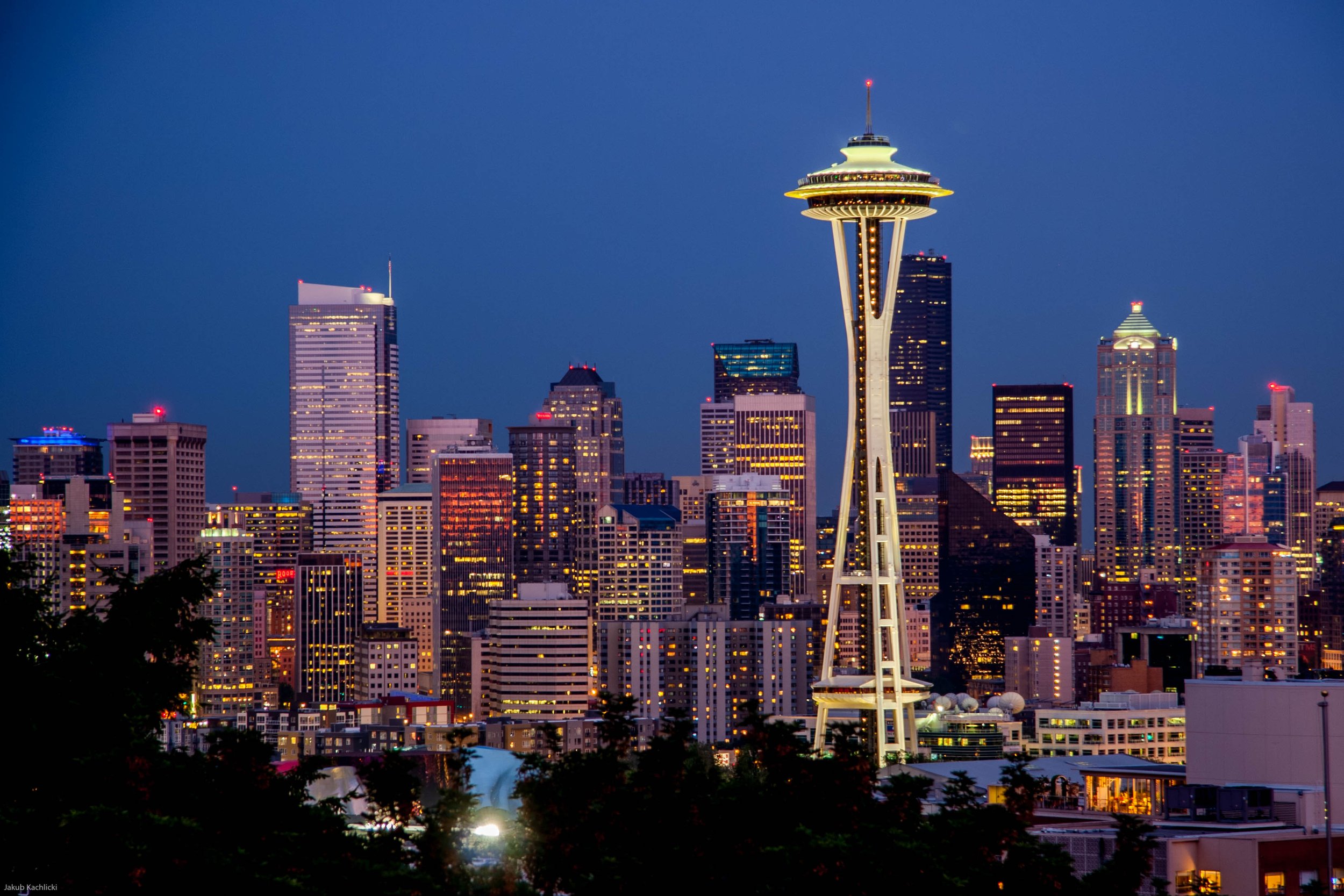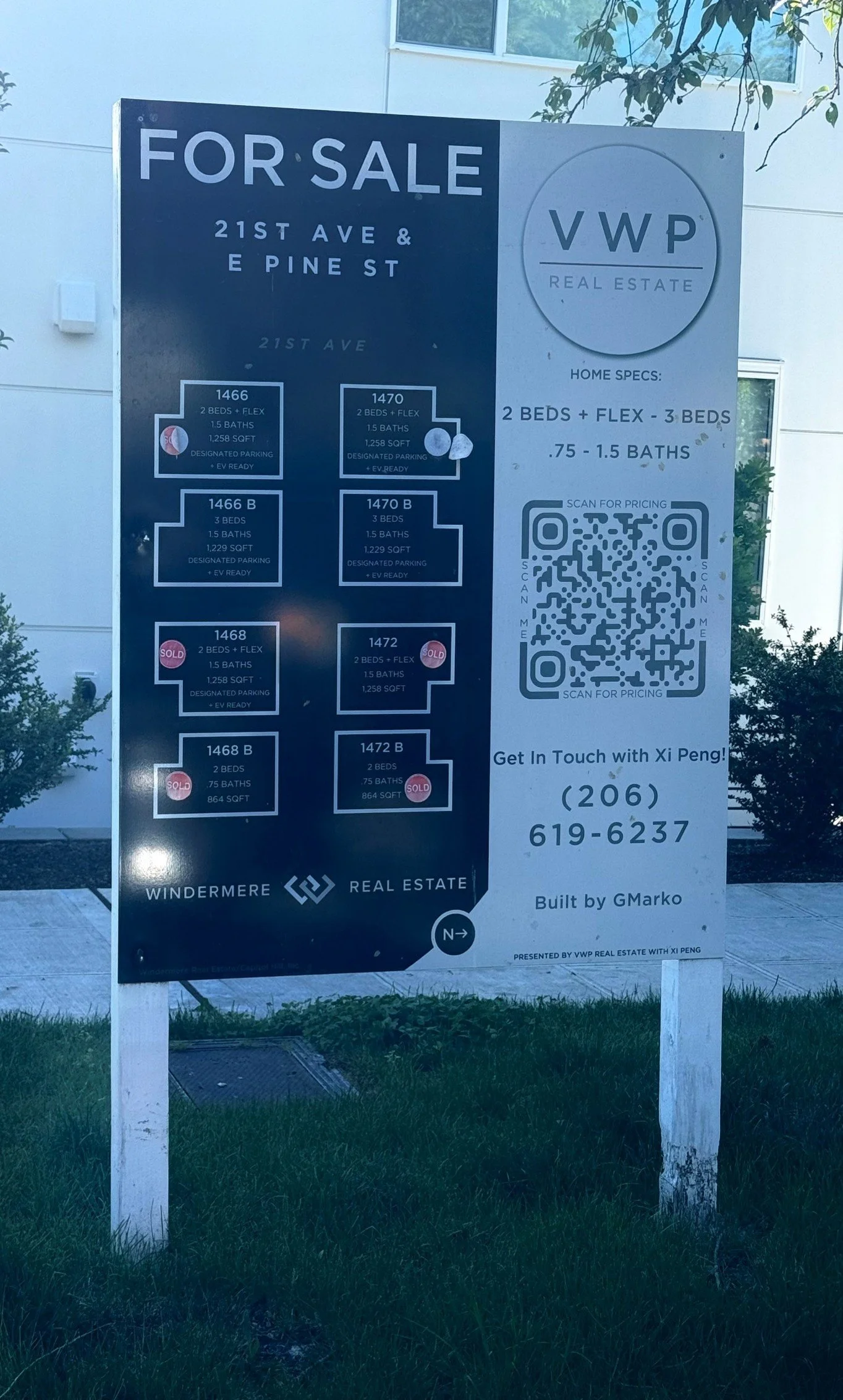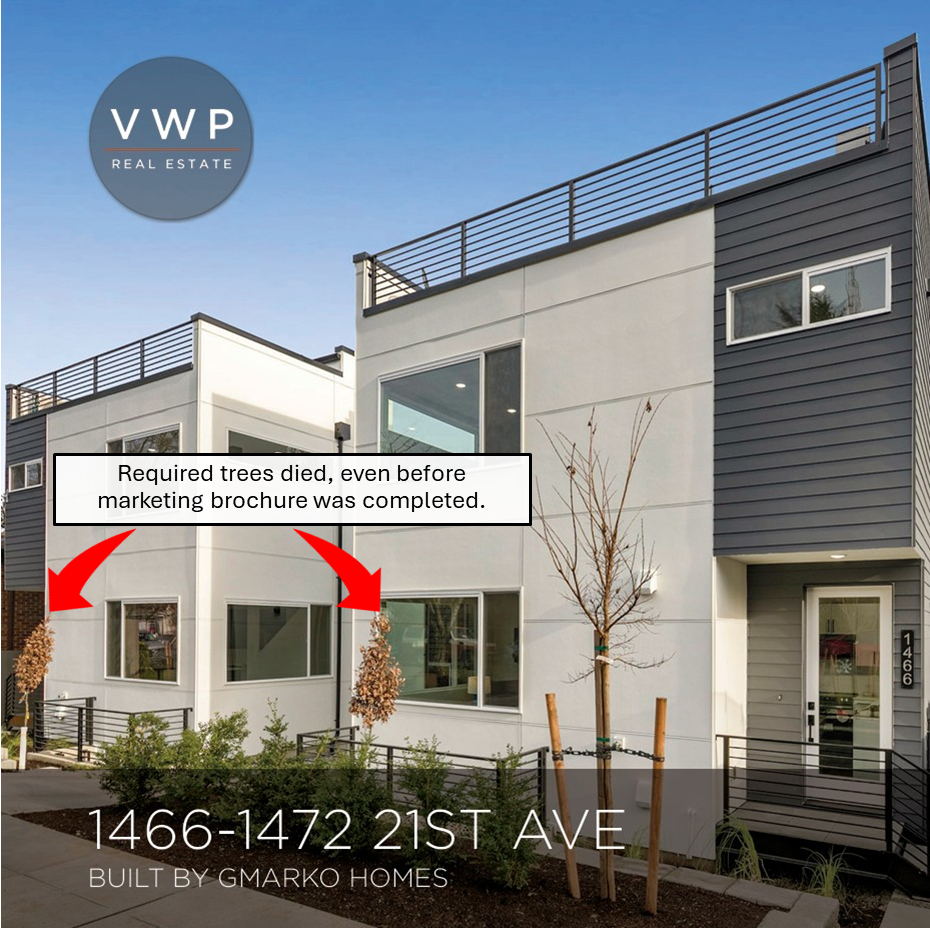Amendment 102 approved!!
SEATTLE TIMES ARTICLES - SEPT 2025
Seattle growth plan lacks creativity, coherence. Here’s how to repair it
Amazon pledged to support affordable housing. How has it fared so far?
At Friday’s Public Hearing, we called on Councilmembers to:
SUPPPORT sending notices to residents of area-wide rezones (Amendment 110). Thank you CM Saka.
APPROVE CM Rivera’s Amendment 93 and Amendment 102 on tree protection
DENY granting developer “Bonuses” that overbuild (various amendments): FAR, setbacks, height, and lot coverage bonuses for middle housing are unnecessary in a bill already designed to enable it. Let’s keep larger apartments and condos in the LR+ zones, and reserve Neighborhood Residential (NR) zones for affordable middle housing: duplex, triples, fourplexes and smaller single family homes. Example: FAR for 3-story residential from 1.0 to 1.1, and incrementally higher for 4- and 5-story buildings.
DENY the inflation of height limits (Amendments 74, 78, 91, 93): Allows 40–47 feet (incl. roof) in Neighborhood Residential zones and pushes lowrise (LR) zones higher still.
DENY buildout of Environmentally Critical Areas (Amendment 72): Incents development in hazardous and environmentally sensitive areas.
DENY elimination of 6,000 sq ft minimum for stacked flats citywide in NR (Amendment 77): Strips away the lot-size safeguard, opening even the smallest parcels to stacked flats.
DENY removal of parking requirements (Amendments 7, 84, 85, 86): Pushes parking burdens into surrounding narrow streets and reduces safety; most households still need cars and a place to park them.
DENY distortion of ADUs (Amendments 54, 55, 56, 57, 58, 59): Turns ADUs into effectively free additional primary units, making them larger and subdividable. Also makes ADUs exempt from FAR, density calculations, and Mandatory Housing Affordability (MHA) requirements. This fuels lot-buildout without delivering affordability.
DENY conflating Bus Routes with Mass Transit (Amendments 60, 61, 76): Extending development entitlements intended for BRT and Light Rail facilities to lots within ½ mile of typical “frequent” bus stops undermines the land-use goal of creating localized zones of density near true mass transit. Changing the definition to include Frequent transit would convert nearly ALL of Seattle into areas of mass density,
DENY programs giving developer incentives to lots that once had ownership covenants (Amendment 2): The affordability requirement is minimal—just 25% of units reserved for households earning 80% of area median income (roughly the average resident). Read: South Seattle Emerald Opinion piece, “Wrong Fix” paper, and letter to Councilmembers.
DENY removal of amenity areas from buildings (Amendment 99): This will eliminate any possible green space because surface parking, garages, sheds and other "unconditioned spaces" are exempt from lot coverage limits.
DENY providing height bonus, parking waiver, and amenity area reduction for saving a Tier 2 tree (Amendment 94). These developer entitlements far outweigh the value of preserving one Tier 2 tree which could often be a small tree. This amendment also does not include any minimum protected area per tree. Amendments 102 and 93 together achieve the intent of Amendment 94.
DENY redefinition of the Tree Protection Area (TPA) as the dripline (Amendment 106): The existing TPA loophole is addressed by Amendment 102. Major pruning is not enforced and often occurs before permit application to shrink the tree footprint. Dripline TPAs are not recommended by the International Society of Arboriculture or ANSI A300, particularly for conifers.
Dear Councilmembers,
Seattle Residents for Thoughtful Growth, representing residents from 22 neighborhoods, is deeply concerned about the direction and cumulative impact of several proposed amendments to the Comprehensive Plan and CB120985/CB120993. We support increased density focused on affordable middle housing. While some amendments are beneficial (like 110 for notice), others, as shown below, risk accelerating the loss of naturally affordable housing. In its place will come high-priced development that displaces renters and pushes out homeowners through rising property taxes and decreased livability.
CB 120993, intended to advance middle housing affordability, has instead been drafted in such a way that makes tall, detached, single-family homes the “highest and best use” of land[1]. Instead of removing this outcome from the playbook, many current amendments attempt to patch the problem with incentives—an effort that fails to address the underlying issue. The resulting outcomes will be even more damaging to Seattle’s current and future residents.
These changes will not produce the housing Seattle needs. They will fuel maximum buildout of market-rate units, often targeting the very places where lower-cost homes, more affordable rental units, and sensitive environmental areas exist. The likely outcome: displacement, tree canopy loss, and commercial shifts that erode both diversity and livability. Don’t let this be your legacy. We can fix this and meet Seattle’s needs with affordable middle housing and developer opportunities in the upzoned areas. You can always upzone more – but pavement is forever.
The most damaging amendments include:
Middle-housing “bonuses” that overbuild (various amendments): FAR, setbacks, height, and lot coverage bonuses for middle housing are unnecessary in a bill already designed to enable it. Without limits—such as prohibiting lot subdivision below 2,500 sq ft while still allowing fee-simple ownership—these incentives simply encourage maximum lot coverage at the expense of tree canopy, green space, privacy and sunlight; and will result in buildings out of scale with existing homes. Let’s keep the tall, cubed-out buildings where they belong: in the LR+ zones, and reserve NR for affordable middle housing.
Inflated height limits (Amendments 74, 78, 91, 93): Allows 40–47 feet (incl. roof) in Neighborhood Residential zones and pushes lowrise zones higher still, inviting bulkier, more expensive construction that displaces smaller, more affordable homes and existing middle housing, often for no increase in density.
Removal of parking requirements (Amendments 7, 84, 85, 86): Eliminates parking citywide, even for institutions and businesses, pushing parking burdens into surrounding neighborhoods and reducing the viability of family-sized housing in a city with limited public transit.
Environmentally Critical Area buildout (Amendment 72): Counts designated non-disturbance areas in steep slopes, wetlands and riparian zones toward density calculations, incentivizing development in hazardous and environmentally sensitive areas.
ADU deregulation (Amendments 54, 55, 56, 57, 58, 59): Turns ADUs into effectively free additional primary units—making them larger, subdividable, and exempt from FAR, density calculations, and Mandatory Housing Affordability (MHA) requirements. This fuels lot-buildout without delivering affordability.
Conflating Transit Routes (Amendments 60, 61, 76): Extending development entitlements intended for BRT and Light Rail facilities or frequent transit undermines the land-use goal of creating localized zones of density near appropriate transit.
We urge you to consider these amendments as a whole, not in isolation. Their combined effects could permanently negatively alter housing affordability and the livability of Seattle’s neighborhoods. We encourage you to pause on adopting CB120993 unit we can work together to turn it into an effective middle housing bill. We would like the opportunity to present our analysis and case studies to Council to ensure you are receiving a full picture of the likely outcomes. Let’s make sure CB120993 enables and encourages the housing we actually need while preserving what residents cherish about our city. Since we have interim legislation complying with state law, and CB120993 has dramatic impacts to every residential parcel in Seattle, let’s collaborate to make it work for Seattle’s current and future residents - not just serve developers.
Sincerely,
Seattle Residents for Thoughtful Growth
SRTG is a coalition of residents of 22 neighborhoods advocating for equitable and compatible housing growth in Seattle. Neighborhoods represented include: Capitol Hill | Central District | Columbia City | Green Lake | Greenwood | Haller Lake | Madison Park | Madrona | Magnolia | Maple Leaf | Montlake | Mt Baker | Phinney Ridge | Queen Anne | Tangletown | Wallingford | Washington Park | Wedgwood |West Seattle – Fauntleroy | West Seattle - Seaview/Fairmount | Whittier Heights
Notes:
[1] This shift from a middle housing bill to single family housing accelerator did not happen by accident. On April 16, 2025, official slides about HB1110’s implementation via CB120969 presented to the public solely depicted multi-family dwellings, reflecting the bill’s stated intent to encourage diverse housing types (see image).
Then on June 11, 2025 the CB 120993 - Central Staff Memo language had been altered to describe detached single-family dwellings—an irreversible change that redefined the post-CB120993 “highest and best use” for Seattle’s NR zoned lots. This was a turning point that fundamentally and quietly changed the bill’s direction and purpose, creating a path for luxury detached home construction (on small subdivided parcels) under the guise of middle housing reform.
Seattle’s Affordable Housing System is Crumbling, and Roots to Roofs will make it worse
Editorial by Lois Martin, Ruby Holland, Robert Stephens, Jr
South Seattle Emerald Newspaper
State Mandate: Build Middle Housing,
not Single Family Homes and Tower-hoods
HB1110 defines Middle Housing as: “compatible in scale, form, and character with single-family houses and contain two or more attached, stacked, or clustered homes including duplexes, triplexes, fourplexes, fiveplexes, sixplexes, townhouses, stacked flats, courtyard apartments, and cottage housing.” Source: HB1110, lines 32 - 35
What is not Middle Housing? Detached single-family “tower homes” and oversized attached units over 1,250 square feet do not align with the spirit or intent of Middle Housing. When developers replace older, modestly priced homes with luxury units—especially tall, bulky tower homes—they eliminate existing Middle Housing, erase tree canopy, and drive up land values. These projects often attract wealthier buyers relocating from other cities, while long-time residents seeking attainable housing are left with even fewer options.
If we continue down this path, we risk accelerating the destruction of true Middle Housing—ironically, under the banner of creating it.

Seattle Residents for Responsible Growth
Over 23 Seattle organizations and neighborhood groups agree: Seattle can do better. The City’s HB1110 Permanent Legislation, which applies to every single-family lot in the city, unnecessarily shrinks setbacks, raises roof heights, and expands lot coverage—changes that will fast-track demolition and large-scale redevelopment across neighborhoods – to the benefit of developers and investors and to the detriment of affordable Middle Housing, current residents, and the environment. There are many examples of middle housing in Seattle today that respect the scale, character, and tree canopies of their neighborhoods – the true intent of HB1110. Let’s do more of that!
Capitol Hill | Central District | Columbia City | Green Lake | Greenwood | Haller Lake | Madison Park | Madrona |
Magnolia | Maple Leaf | Montlake | Mt Baker | Phinney Ridge | Queen Anne | Tangletown | Wallingford |
Washington Park | Wedgwood |West Seattle – Fauntleroy | West Seattle - Seaview/Fairmount | Whittier Heights
TAKE ACTION TODAY
Write to your Council Member against the amendments (email list here), as well as at-large Council Members Rinck and Nelson.
RESOURCES
Read the letter to Council Members from a prominent Seattle Land Use Attorney: Letter
SRTG specific Amendment Requests for CB 120993 (Seattle’s version of HB1110): Amendment Requests
Recent Newsletters: July 18, June 16, June 5, May 22 - and receive our newsletter: click here
Change.org petition: click here
Final maps for Neighborhood and Urban Centers (some modified by Aug Amendments): here
Transit Oriented Development Seattle GIS maps here
Case Study: NR zoning will line developer pockets without bringing down prices
Case Study: Middle Housing gets destroyed for luxury housing, with “affordable housing” as the premise
SEATTLE TIMES ARTICLES
June 12: Harrell’s plan to speed up housing construction in Seattle by David Kroman
June 5: Editorial: Trees & Middle Housing- Seattle Can Have Both - Read Pollet’s letter
May 29: Seattle City Council approves temporary housing density plan by David Kroman
May 22: Seattle City Council committee advances housing plan with more density by David Kroman
Jan 24: More concrete, less green: A cautionary tale about upzoning from South Park by Alex Fryer
Background
This summer, the City Council is prioritizing major decisions on future growth citywide. A significant focus is on passing CB120993, legislation to comply with the state mandate (HB1110) allowing 4-6 units per lot across the city. This will substantially increase housing capacity and density. Between June and September, the Council will review, debate, and legislate the Comprehensive Plan CB120985, featuring new policies and Future Land Use Maps. Rezoning and converting all single-family lots to multi-family is the objective of Phase 1. The Full Council and Select Committee Meetings will primarily focus on HB1110 and the Comprehensive Plan legislation, aiming for a final vote in September. Council will shift to budget work in October-November, resuming Comprehensive Plan Phase II in Dec-January.






